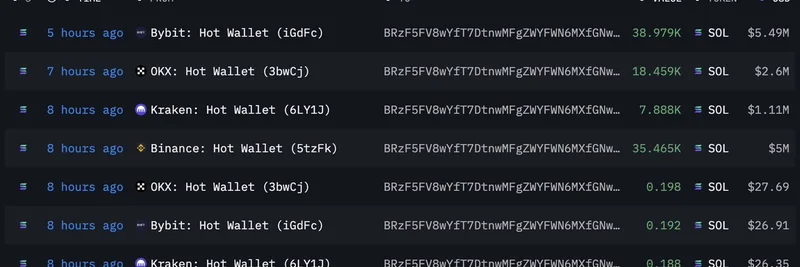TL;DR
There’s a token called POND on the Base network at 0xa628dba86174097d1c74b5c756fce17ccc71de17. Based on current on-chain and public info, it does not appear to be the well-known POND from the Marlin Protocol. Name collisions are common in crypto, especially with meme tokens. Proceed carefully: verify the contract address, assess liquidity, holder distribution, taxes, and whether trading is safe before you interact.
Quick context: the “other” POND from Marlin
The POND most people know is the native token of the Marlin Protocol, a layer-0 network that improves how data moves between nodes—think of it like a faster highway for Web3. It helps speed up block propagation and transaction relay across chains like Ethereum, Polygon, and Cosmos.
A few basics about Marlin’s POND:
- It’s an ERC-20 and exists on multiple networks, including BNB Chain.
- It’s used for staking, governance (often via MPond, where 1 MPond = 1,000,000 POND), incentivizing node operators, and paying for services in the Marlin ecosystem.
- Marlin has notable backers like Binance Labs, Arrington XRP Capital, Electric Capital, and NGC Ventures.
POND on Base is not the Marlin token
Searches for the specific Base contract 0xa628dba86174097d1c74b5c756fce17ccc71de17 across Base explorers like BaseScan, Blockscout (Base), and OKLink (Base) do not link it to the official Marlin project. That strongly suggests it’s unrelated to Marlin’s POND.
What’s missing so far for this Base token:
- Clear purpose or utility
- Verified team or project documentation
- Transparent tokenomics (supply, allocations, emissions)
- Reliable liquidity and market presence
This could be an independent launch—possibly a meme token or experimental project. Without official documentation or on-chain confirmations tied to a known team, it’s best to treat it as unaffiliated with Marlin.
How to verify a new token on Base (simple checklist)
In crypto, reused tickers are common. Here’s a practical due diligence process you can follow before trading or holding:
Verify the contract address
- Always use official explorers like BaseScan or Blockscout (Base) to confirm the exact address (0xa628dba86174097d1c74b5c756fce17ccc71de17).
- Check if the token name, symbol, and decimals match what the project claims.
Inspect contract ownership and permissions
- See if the contract owner has “renounced” ownership (meaning no one can change key parameters).
- Review functions that can adjust fees or blacklist addresses; overly powerful controls can be risky.
Assess liquidity and locks
- Confirm where liquidity is (e.g., Uniswap or Aerodrome) and whether LP tokens are locked.
- Low or unlocked liquidity can lead to rug-pulls.
Check holder distribution
- Look at top wallets. If one address holds a large share, it can dump and move the market.
- Identify team or deployer wallets and watch their activity.
Test trading safety
- Use small test swaps to confirm it’s not a honeypot (a trap where you can buy but not sell).
- Review buy/sell tax settings and any transfer limits.
Validate project presence
- Look for a website, GitHub, X (Twitter), Telegram, and consistent messaging tied to the contract address.
- Beware of spoofed sites or mismatched addresses.
Monitor smart money and on-chain signals
- Track notable wallets entering or exiting positions.
- Watch for abnormal transfers or rapid ownership changes.
Where to track and trade POND on Base
If you decide to explore this token, start with reliable trackers and reputable DEXs. Always import the contract address directly to avoid lookalike tickers.
- GMGN.AI: A dedicated page with real-time analytics and trading for Base POND is available at https://gmgn.ai/base/token/fV1R5sZ5_0xa628dba86174097d1c74b5c756fce17ccc71de17
- Uniswap (Base): Trade via Uniswap on Base. Import the exact contract address to avoid errors.
- Aerodrome Finance: A native Base DEX at Aerodrome with deep Base liquidity.
- 1inch (Base): Aggregated routing for potentially better prices via 1inch on Base.
Tips before trading:
- Start with a small test swap to confirm both buy and sell work.
- Double-check slippage settings and any visible taxes.
- Re-confirm the contract address (0xa628dba86174097d1c74b5c756fce17ccc71de17) in your wallet or DEX.
- Keep gas settings reasonable and avoid rush-hour blocks to minimize failed transactions.
A note on Base and ERC-20 basics
- Base is an Ethereum Layer-2 by Coinbase built for low-cost, fast transactions. Tokens on Base typically follow the ERC-20 standard, meaning they’re compatible with most Ethereum tooling.
- ERC-20 is simply the common set of rules tokens follow (like how many decimals, how balances move, etc.), making them easy to use across wallets and DEXs.
Common risks and confusion to avoid
- Ticker collisions: POND on Base with this address is not Marlin’s POND. Don’t rely on just the name—always verify the contract.
- Impersonation: Scammers often create tokens or sites that borrow branding from well-known projects. Stick to verified links.
- Social engineering: Be careful with DMs or “support” accounts offering help or airdrops.
- Liquidity traps: Thin liquidity can swing prices wildly and increase slippage or failed trades.
Final thoughts
The Base-chain POND at 0xa628dba86174097d1c74b5c756fce17ccc71de17 appears unrelated to the Marlin Protocol’s established POND. That doesn’t automatically make it bad—it might be a meme token or an experimental project—but until there’s verifiable documentation, treat it with extra caution.
If you choose to engage, combine on-chain checks with smart tracking tools and trade on reputable platforms. Start small, confirm sellability, and continuously monitor liquidity, holders, and contract changes. In a market where token names overlap, your best edge is disciplined verification and risk management.




